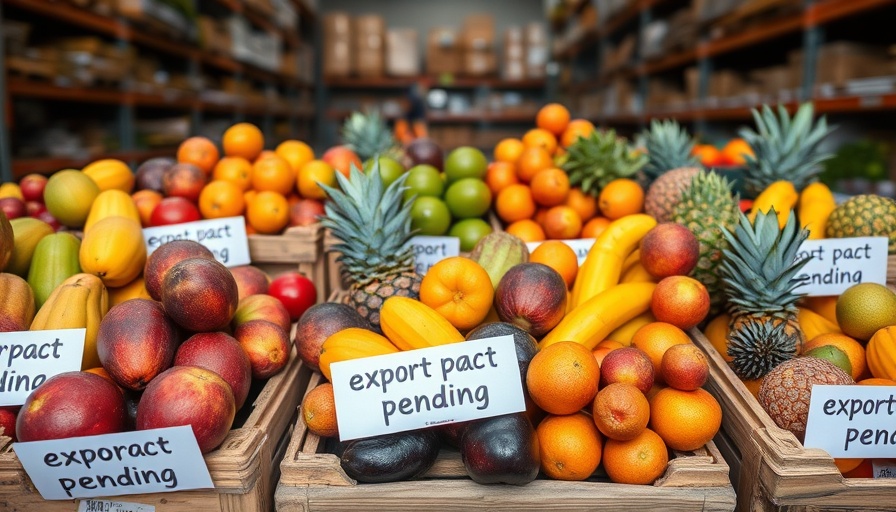
The Rising Tide of Geopolitical Tensions
As the new era of economic and political competition unfolds, Jason Schenker’s forthcoming book, Cold War Two: Navigating a New Era of Uncertainty, plays a crucial role in understanding the intensified tensions between the United States and China. With geopolitical dynamics shifting and each nation vying for supremacy, the book, set to release on March 24, 2025, dives into the complexities of trade, finance, energy, technology, and supply chains—issues increasingly taking center stage in global discourse.
Understanding Cold War Two
Schenker describes this ongoing conflict as a 'Cold War Two,' a framing that emphasizes not only the historical context but also the critical elements of economic warfare and technological dominance. He argues that current U.S.-China relations are not merely a continuation of past disputes but signify a new strategic landscape shaped by globalization's significant interdependencies. This results in both opportunity and risk for businesses, investors, and policymakers alike.
Historical Context and Background
The term 'Cold War' evokes the mid-20th century rivalry between the U.S. and the Soviet Union. However, Schenker posits that economic interconnectedness differentiates today's struggle. Unlike the past, where ideological and military conflicts dominated, the competition now extends into intricate supply chains and technological supremacy. This evolution prompts urgent questions: How will corporations align their strategies amid rival agendas?
Social Connection: Why Now?
The need for a comprehensive understanding of these dynamics is particularly urgent in today’s interconnected world, where the fallout from trade wars and geopolitical confrontation has real ramifications for everyday life. Schenker highlights the stakes not only for global leaders but also for those in underrepresented communities who feel the effects of instability—economically and socially. Cold War Two thus serves as a beacon guiding negotiations and strategies for navigating the precarious dance between cooperation and competition.
Future Predictions and Opportunities
Schenker foresees a landscape where the balance of power is continually shifting, illustrated by the rise of non-aligned nations capable of playing connector roles between the two superpowers. These nations may serve as trade partners beneficial for both sides, a situation that could temper conflicts by fostering economic synergies despite underlying political tensions.
Real-World Examples of Fragmentation
Reflecting on real-world events, economic sanctions and tariffs have exacerbated divisions, creating fault lines that further separate the global marketplace. Patterns show that U.S. investments are increasingly moving towards Vietnam and other emerging markets as companies seek to capitalize on cheaper production costs and avoid tariffs associated with China. Schenker’s analysis thus ensures readers are informed of the broader ramifications of these shifts in investment.
Common Misconceptions in the Dialogue
A misconception persists that economic rivalries signal an inevitable march towards military conflict. Schenker, however, argues that while competition is fierce, it is possible to navigate these waters through diplomacy and strategic alliances, underscoring that misunderstandings can lead to reckless decisions in foreign policy. An understanding of mutual dependencies can foster a more stable environment.
Calls for Open Dialogue
Just as important as understanding the nature of Cold War Two is the call for dialogue between these great powers. Schenker advocates for policies that prioritize economic collaboration where beneficial, recognizing that the interests of the U.S. and China do not fully align but also do not necessitate adversarial stances.
Conclusion: Preparing for the Future
In conclusion, Cold War Two serves as a critical examination of our current geopolitical landscape while providing actionable insights for businesses and policymakers alike. The book rises above traditional narratives and encourages engagement in the midst of uncertainty, making it essential for those looking to navigate future challenges effectively. The world is at a crossroads, and being peculiarly attuned to the nuances of U.S.-China relations is key for any party invested in long-term success.
Take Action: Stay Informed
To navigate the complexities of this new era, engage with Jason Schenker’s work by preordering Cold War Two today and equip yourself with essential strategies and insights to thrive amid shifting geopolitical sands.
 Add Row
Add Row  Add
Add 




Write A Comment